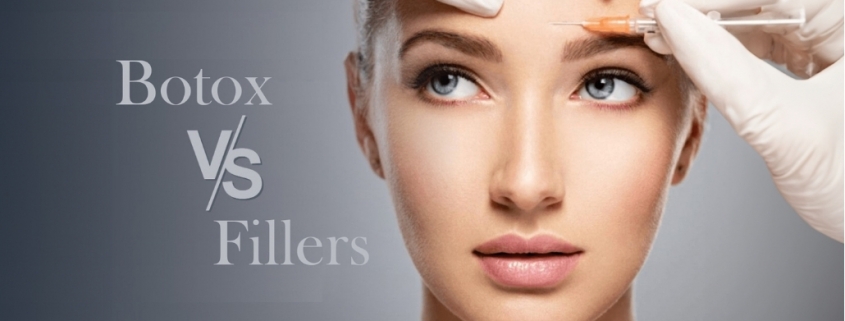Botox and Fillers: Which One is Right for You?
In the realm of cosmetic enhancements, two popular options often take center stage: Botox and dermal fillers. Both treatments offer unique benefits and are widely chosen by individuals looking to rejuvenate their appearance. Deciding between botox or fillers depends on specific goals and personal preferences. Botox or fillers are injectable treatments designed to reduce the appearance of wrinkles and enhance facial features. While they are often mentioned together, they function differently and are best suited for different types of aesthetic concerns. Understanding how fillers or botox work can help you determine which option aligns with your beauty goals.
What is Botox?
Botox is a neurotoxin derived from Clostridium botulinum bacteria. It temporarily paralyzes the muscles responsible for causing wrinkles by blocking nerve signals. When the muscles cannot contract, the skin appears smoother and more youthful.
How Does Botox Work?
Botox works by being injected directly into the muscles underlying the skin. It effectively interrupts the communication between nerves and muscles, preventing muscle contractions. As a result, the overlying skin becomes relaxed and smoother, reducing the appearance of fine lines and wrinkles. This treatment is particularly effective for dynamic wrinkles caused by repetitive facial expressions, such as forehead lines, laugh lines, and smile lines.
Common Areas Treated with Botox
Botox is widely used for treating facial wrinkles, particularly those around the eyes and forehead. The most common areas for botox injections include the forehead lines, frown lines (between the eyebrows), and crow’s feet (lines around the eyes). Botox is also used for minimizing lines around the mouth and reducing neck bands, making it a popular choice for treating under eye wrinkles and smile lines.
Typical Results and Duration
The results of Botox injections typically become visible within a few days, with full effects appearing in one to two weeks and lasting between three to six months, depending on factors like muscle activity. For dermal fillers, the results are usually immediate, with hyaluronic acid fillers lasting six months to a year, calcium hydroxylapatite fillers up to 18 months, and poly-L-lactic acid fillers providing gradual, long-lasting results for up to two years. When considering what lasts longer, fillers or Botox, regular maintenance is key for both treatments to sustain the desired effect.
Pros and Cons of Botox
Botox offers numerous advantages, including quick procedures, minimal discomfort, and no downtime. It is an excellent option for treating dynamic wrinkles and achieving a natural-looking reduction in facial lines. However, it has limitations, as it cannot address volume loss or deeper wrinkles. Overuse of Botox can also lead to a “frozen” appearance, where facial expressions become limited, which is something to consider when deciding if you should get botox or fillers.
What are Dermal Fillers?
Dermal fillers, often referred to as simply “fillers,” are injectable substances used to restore volume, smooth wrinkles, and enhance facial contours. Unlike botox, which affects muscle movement, fillers work by physically filling in lines and adding volume beneath the skin.
Types of Dermal Fillers
There are various types of dermal fillers, each with its own unique properties and applications:
Hyaluronic Acid Fillers: These are the most popular type of fillers due to their natural compatibility with the body. Hyaluronic acid fillers, such as Juvederm and Restylane, attract and retain moisture, providing a plumping effect. They are commonly used for lip augmentation, cheek enhancement, and reducing nasolabial folds, which are also known as smile lines.
Calcium Hydroxylapatite Fillers: Known by the brand name Radiesse, these fillers are thicker and offer longer-lasting results compared to hyaluronic acid fillers. They are often used to treat deeper facial wrinkles and enhance the volume of the cheeks and jawline.
Poly-L-Lactic Acid Fillers: These fillers, such as Sculptra, work by stimulating collagen production over time. They provide gradual and long-lasting improvement in facial volume, making them ideal for treating overall facial volume loss and deep wrinkles.
How Does Fillers Work?
Dermal fillers are injected directly into the skin to add volume, smooth wrinkles, and enhance facial contours. They work by filling the spaces under the skin, supporting the tissue, and restoring a youthful appearance. Fillers can also stimulate collagen production, which improves skin elasticity and texture, which is why fillers or botox for under eyes are a common treatment choice.
Common Areas Treated with Fillers
Fillers are versatile and can be used to treat various areas of the face. Common areas include the cheeks, lips, nasolabial folds (smile lines), marionette lines (lines running from the corners of the mouth to the chin), and under-eye hollows. Fillers are also used for non-surgical nose reshaping and jawline contouring, often considered when deciding whether to use fillers or botox for smile lines.
Typical Results and Duration
The results of dermal filler injections are usually visible immediately after the procedure. The duration of the results varies depending on the type of filler used. Hyaluronic acid fillers generally last between six months to a year, while calcium hydroxylapatite fillers can last up to 18 months. Poly-L-lactic acid fillers provide gradual results that can last up to two years, making the question of what lasts longer fillers or botox a key consideration.
Pros and Cons of Dermal Fillers
Dermal fillers offer numerous benefits, including immediate results, customizable treatment options, and the ability to enhance various facial features. They are ideal for addressing volume loss and deeper wrinkles. However, fillers are not permanent and require periodic maintenance. There is also a risk of bruising, swelling, and allergic reactions, although these are generally temporary. When weighing are fillers or botox better, these pros and cons can be crucial factors.
What is the Difference Between Botox and Fillers?
While both Botox and dermal fillers aim to enhance facial appearance, they address different concerns and work in distinct ways:
Mechanism: Botox reduces muscle activity to smooth out dynamic wrinkles, while fillers add volume to areas with static wrinkles and volume loss.
Target Areas: Botox is primarily used for forehead lines, laugh lines, and crow’s feet, while fillers are used for smile lines, under-eye hollows, and lip enhancement.
Results and Duration: Botox results typically last three to six months, whereas filler results can last from six months to two years.
Procedure Time and Recovery: Both procedures are quick, but fillers offer immediate results, while Botox results take a few days to appear. Both treatments have minimal downtime.
Side Effects: Common side effects for both include bruising and swelling, but Botox may also cause muscle weakness if overused. Fillers can sometimes lead to lumps or asymmetry.
Which Treatment is Right for You?
Choosing between botox or fillers depends on your aesthetic goals. If you are concerned about dynamic wrinkles caused by muscle movement, such as forehead lines or crow’s feet, Botox may be the ideal option. On the other hand, if you are looking to restore lost volume, enhance facial contours, or reduce the appearance of smile lines and under-eye hollows, fillers might be the better choice. Ultimately, the decision to do I need botox or fillers will depend on your individual needs and consultation with a qualified professional.
FAQ
How do you know if Botox is right for you?
Botox is suitable if you are primarily concerned with dynamic wrinkles, such as those caused by facial expressions. If you have visible lines on your forehead, around your eyes, or between your eyebrows, and you desire a non-surgical solution, Botox may be the right option. A consultation with a skilled practitioner can help assess your suitability for Botox, providing clarity on whether should I get botox or fillers.
Are fillers healthier than Botox?
Both fillers and botox are considered safe when administered by qualified professionals. The choice between fillers or botox should be based on your specific concerns and goals rather than overall health. Each treatment has its own set of risks and benefits, which should be discussed with your healthcare provider.
Who should not get Botox or fillers?
Individuals who are pregnant, breastfeeding, or have certain medical conditions, such as neuromuscular disorders or severe allergies, should avoid Botox and fillers. A detailed medical history and consultation with a licensed professional are essential to ensure safe and effective treatment.



